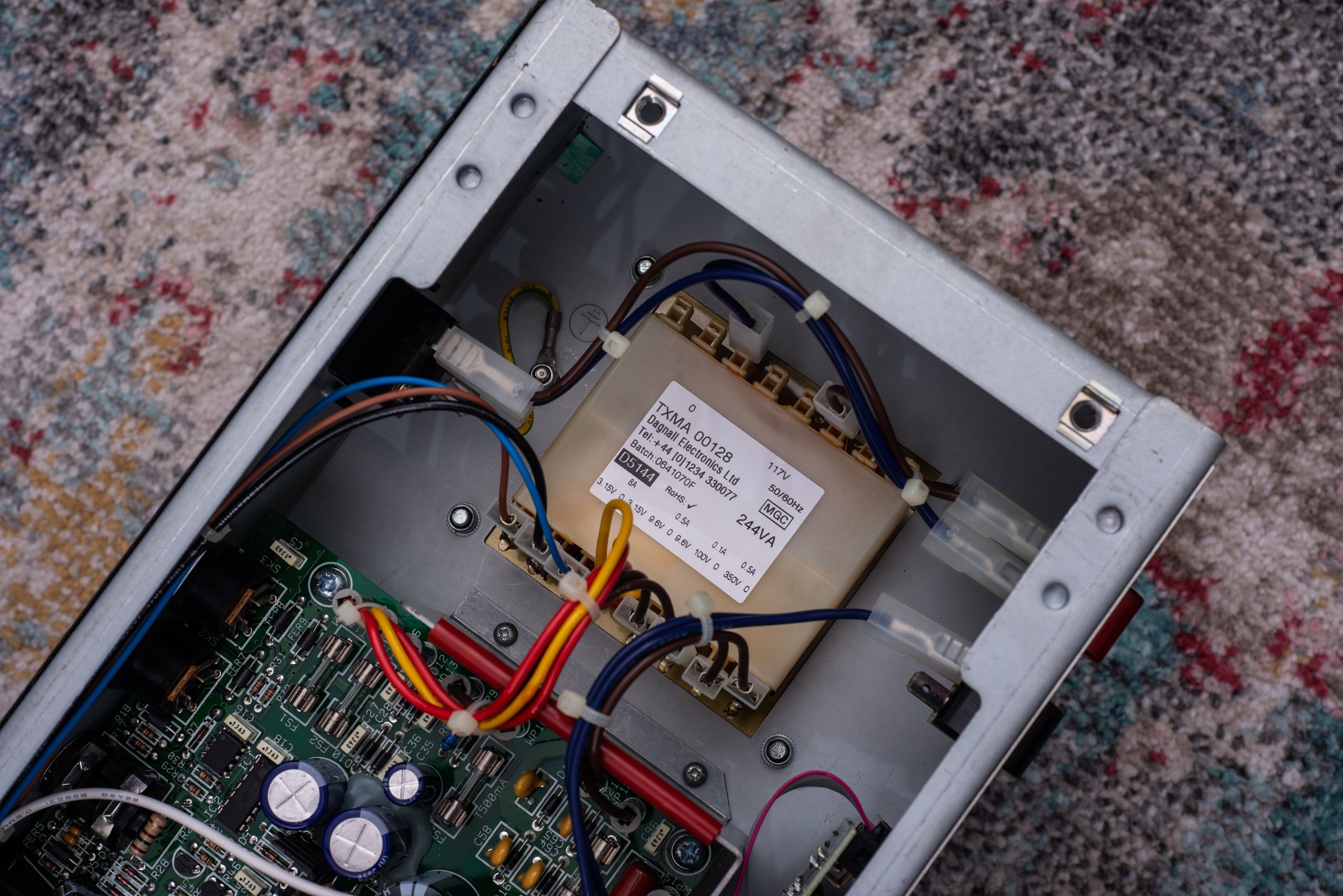2007 Marshall JVM410H
Specs
4 Channels with 3 modes each
100w Output
4x EL34 Power Tubes
5x 12AX7 Preamp tubes
Digital reverb
$1749 in 2007
$3199 in 2023
Overview
Yep - somehow I ended up with another one of these, and from the same introductory year! With prices on the rise, I found this amp locally priced very reasonably and couldn’t resist, even though it’s not my favorite Marshall design by any means, it’s a good one to have for comparison’s sake.
Originally, I returned the first one I had because I felt the way I enjoyed it - OD1 Orange mode - was very similar if not identical to my JCM2000 TSL, and I still feel that they are extremely similar. Where they differ is the JVM offers a number of other modes on the clean and crunch channels, and especially Clean Red and Crunch Orange sound very good to me, if a little more refined and lacking some of the upper mids magic as other Marshalls like my JCM800 2203 - no surprise there though. The JVM also has the OD2 channel, which is identical to OD1 except with a different mids slope, which results in a more “modern” scooped tone, which may be useful for metal or other styles. Personally, I find this mode to be the weakest part of the entire amp, which makes it all the more puzzling to me why the JVM205/210 amps use OD2 as the default and lack OD1 entirely, since OD1 is much more in the traditional Marshall sound territory. It also might explain, besides price, why the DSL100HR amps outsell the JVM’s considerably, since they will sound similar for those who don’t need 4 channels, advanced switching, or care about the amp being made in the UK.
In addition to the four channels, this amp also has two effects loops, footswitchable master volumes, a digital reverb, and a very cool switching system. Basically, you have a 6 button footswitch, but it only uses a standard 1/4” cable - if you’ve read other articles on this site, you’ll know that I far prefer this for ease of use and longevity. Anyway, the unique thing is that you can store any combination of settings on the amp to a footswitch button. For example, you could store Clean channel, Green Mode, FX off, Reverb On to button 1, then Clean channel, Red Mode, Reverb Off, FX on, Master Volume #2 to button 2. Expand that to all four channels and the versatility is absolutely huge. The only part of the front panel that can’t be assigned in some way is the master presence and resonance controls - each channel even has its own reverb mix control. The digital reverb sounds very good, nearly the same as the spring reverb when comparing to my TSL.
As expected on an amp like this, the noise floor is high which is especially noticeable on the OD1 and OD2 channels, which both have a pretty excessive amount of gain in the red and orange modes. Interestingly, there are a few “walls” internally around the transformer and filter caps, so I suspect this is an attempt to help reduce component noise from those areas.
I talked a little about the modes before, but the most interesting part is the way the amp uses the same 4 preamp tubes, switching in and out different values depending on the mode you are in. There is a handy diagram that shows how this all works which I’ve linked here. It’s a very cool switching system, and you can see for example that Crunch Green uses only two gain stages, much like a classic plexi amp when using only one input. OD1 and OD2 Orange and Red on the other hand use 4 tube gain stages, with red using a higher gain bias on V2A - very cool. The clean channel, in a manner similar to the TSL or 6100 series amps, has the EQ located prior to the gain stages similar to a fender, which presents some unique tones on that channel as well. The Crunch and OD channels all have the EQ located after the gain stages, with a cathode follower much like past Marshall amp designs.















